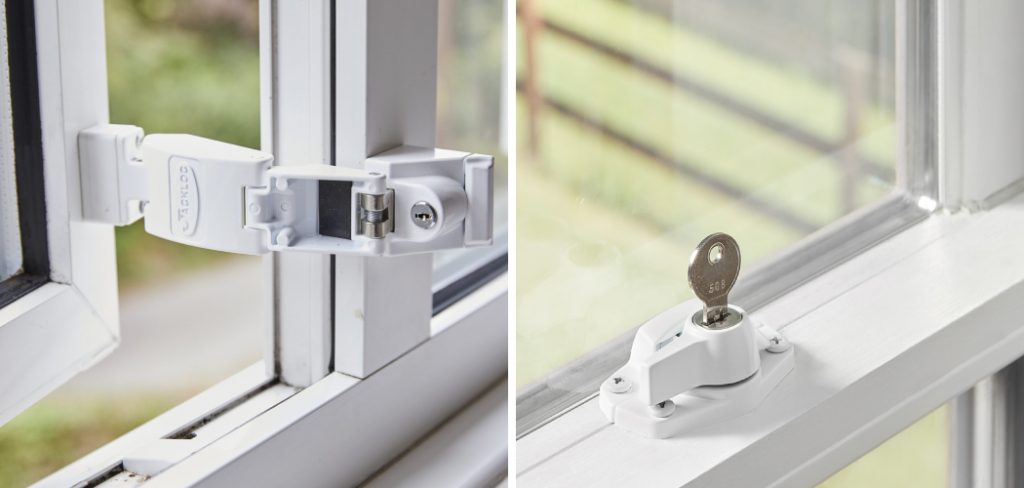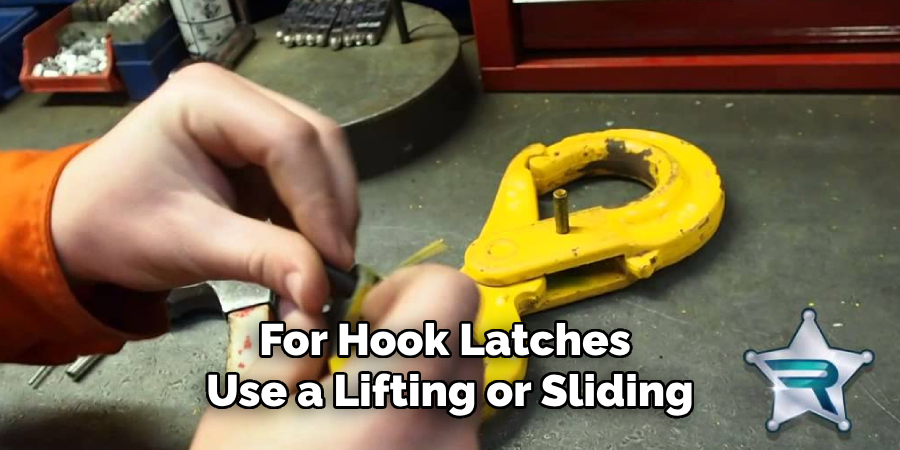Opening windows with latches can be an easy and effective way to enhance ventilation and natural light in your home. However, understanding the correct technique is essential to ensure the safety and longevity of both the window and its components. Windows with latches typically operate through a mechanical fastener that holds the window in a closed position.

By learning how to properly open these windows, you can enjoy the benefits of fresh air circulation while maintaining security and energy efficiency.
In this guide on how to open windows with latches, we will explore the step-by-step process for opening windows with latches, along with tips to address common challenges and ensure smooth operation.
Why Open Windows With Latches?
Opening windows with latches comes with several advantages that can greatly enhance your living environment. One of the primary reasons is improved ventilation; allowing fresh air to circulate in your home reduces indoor pollutants and promotes better air quality. Additionally, natural light can flood in, brightening your space and creating a more pleasant and inviting atmosphere. Moreover, windows with latches offer a level of security as the latches can be firmly secured, reducing the chance of unwanted intrusions.
They are also energy-efficient, as proper sealing when closed can help maintain indoor temperature by preventing drafts. Finally, maintaining the habit of opening your windows can help foster a healthier lifestyle by bringing a bit of nature into your daily routine.
Needed Materials
- Windows With Latches
- Screwdriver (If Needed)
- Cleaning Supplies (Optional)

8 Step-by-step Guides on How to Open Windows With Latches
Step 1: Inspect the Window
Before attempting to open a window with a latch, it’s crucial to conduct a thorough inspection. Begin by examining the condition of the window frame and the latch mechanism. Check for any visible damage, rust, or wear that might impede the operation of the latch. Ensure that the frame is free from obstructions like dirt or debris, which could affect a smooth opening.
Additionally, take note of any loose or missing screws that might require tightening or replacement. By ensuring the window and latch are in good condition, you lay the groundwork for a seamless opening process.
Step 2: Identify the Type of Latch
Once the inspection is complete, the next step is to identify the type of latch your window uses. There are several common latch types, such as cam latches, hook latches, and espagnolette latches, each requiring a slightly different technique for opening. Cam latches are often found on casement windows and operate with a simple rotating motion. Hook latches, more common in older window designs, typically involve lifting or sliding a mechanism.
Espagnolette latches, popular in modern windows, use a gear mechanism that locks the window at multiple points. By identifying the type of latch, you can apply the appropriate method to open the window safely and effectively. Understanding the specific latch type will also help in addressing any operational issues or making necessary adjustments.
Step 3: Prepare for the Opening
Once you have identified the latch type, prepare for opening by gathering any tools or materials needed. This could include a screwdriver to tighten loose screws or cleaning supplies if the window needs some maintenance.

Additionally, ensure that there is enough space around the window to allow for a smooth opening without any obstructions. If necessary, move furniture or other items away from the window to avoid any accidents or damage.
Step 4: Unlock Any Securing Mechanisms
Before attempting to open the window, make sure that all securing mechanisms are unlocked. This could involve turning a key lock, sliding a security bolt, or releasing a catch mechanism near the latch.
If your window has multiple latches, make sure to unlock all of them before opening them. Failure to do so could result in a window that is only partially open or unable to close properly when you finish.
Step 5: Locate the Latch Handle
Once all securing mechanisms are unlocked, locate the latch handle on the window frame. This may be a small knob or lever that operates the latch mechanism. In some cases, it may also be a key-operated handle.
Ensure that the handle is clean and free from any obstructions, as this could affect its ability to operate smoothly.
Step 6: Activate the Latch Mechanism
Depending on the type of latch, you may need to rotate, lift, or slide the handle to activate the latch mechanism. If it is a cam latch, rotate the handle in the direction indicated by any arrows or markings on the window frame. For hook latches, use a lifting or sliding motion as required.

Espagnolette latches typically involve turning a key in the handle to engage and disengage multiple locking points along the window frame.
Step 7: Open the Window
With the latch mechanism activated, gently push or pull on the window sash to open it. Take care not to apply too much force as this could cause damage if there are any obstructions preventing smooth operation. Apply steady pressure while keeping an eye on the latch handle to ensure it remains in the open position and does not re-engage.
If the window is difficult to open, check for any remaining obstructions or address any operational issues with the latch mechanism.
Step 8: Secure the Window
Once fully opened, secure the window by firmly engaging any locking mechanisms. Take a moment to test the window by gently pushing or pulling on it to ensure it is securely closed. If there are any issues, refer back to previous steps to identify and address them before leaving the window unattended.
Following these steps on how to open windows with latches will help you safely and effectively open windows with latches in your home. Remember to regularly inspect and maintain your windows and latches to ensure they continue to function properly and provide you with all the benefits they offer. So, make it a habit to enjoy the fresh air and natural light by opening your windows with latches whenever possible. Happy window-opening!
Additional Tips
Regular Maintenance:
Schedule periodic checks to clean and lubricate the latch mechanisms, which helps prevent rust and ensures smooth operation.
Weather Considerations:
Be mindful of weather conditions when opening windows. Strong winds could cause abrupt closure, damaging the window or latch.

Child Safety:
Install window safety locks if there are young children in the home to prevent them from opening windows unsupervised.
Use Window Treatments:
Consider using window treatments such as screens or guards to keep insects out while allowing fresh air in.
Energy Efficiency:
Use window latches alongside energy-efficient windows to help conserve energy by reducing cooling and heating needs.
Professional Inspection:
If you encounter persistent issues with your windows or latches, seek professional inspection to avoid further damage.
Frequently Asked Questions
Q: What if My Window Latch is Damaged or Not Functioning Properly?
A: If your latch is damaged, it is best to consult a professional for repairs or replacement. Attempting to force open a damaged latch could further damage the window or cause injury. The same applies if the latch is not functioning properly. It is best to have it inspected and repaired by a professional before attempting to open the window.
Q: Can I Use Any Type of Screwdriver for Tightening Screws?
A: It is best to use the appropriately sized screwdriver for your window screws to avoid stripping or damaging them. If you are unsure, consult the manufacturer’s instructions or seek professional assistance.
Q: Is There Anything Else I Should Check Before Attempting to Open My Window With a Latch?
A: Yes, always make sure that there are no objects or debris blocking the window’s movement before attempting to open it. Additionally, check that any security systems, such as alarms or sensors, are deactivated to avoid any unwanted alerts. Lastly, make sure that the window is not painted shut and can open smoothly. If there are any issues, address them before attempting to open the window.
Q: Can I Paint My Window With the Latch Still Attached?
A: It is recommended to remove the latch before painting your window for a smoother and more even finish. However, if you choose to leave it attached, make sure to cover it with painter’s tape or plastic wrap to avoid getting paint on it.

Conclusion
In summary, knowing how to properly open windows with latches is essential for maintaining the comfort and safety of your home. By identifying the type of latch, preparing accordingly, and following each step carefully, you ensure that windows operate smoothly. Regular inspection and maintenance further extend the functionality of both windows and latches, preventing unnecessary damage and ensuring longevity.
Whether you are looking to enjoy a gentle breeze, enhance natural lighting, or perform routine cleaning, mastering how to open windows with latches will significantly improve your home experience. Always prioritize safety and, when needed, consult professionals for advice and repairs to keep your windows in optimal condition.

